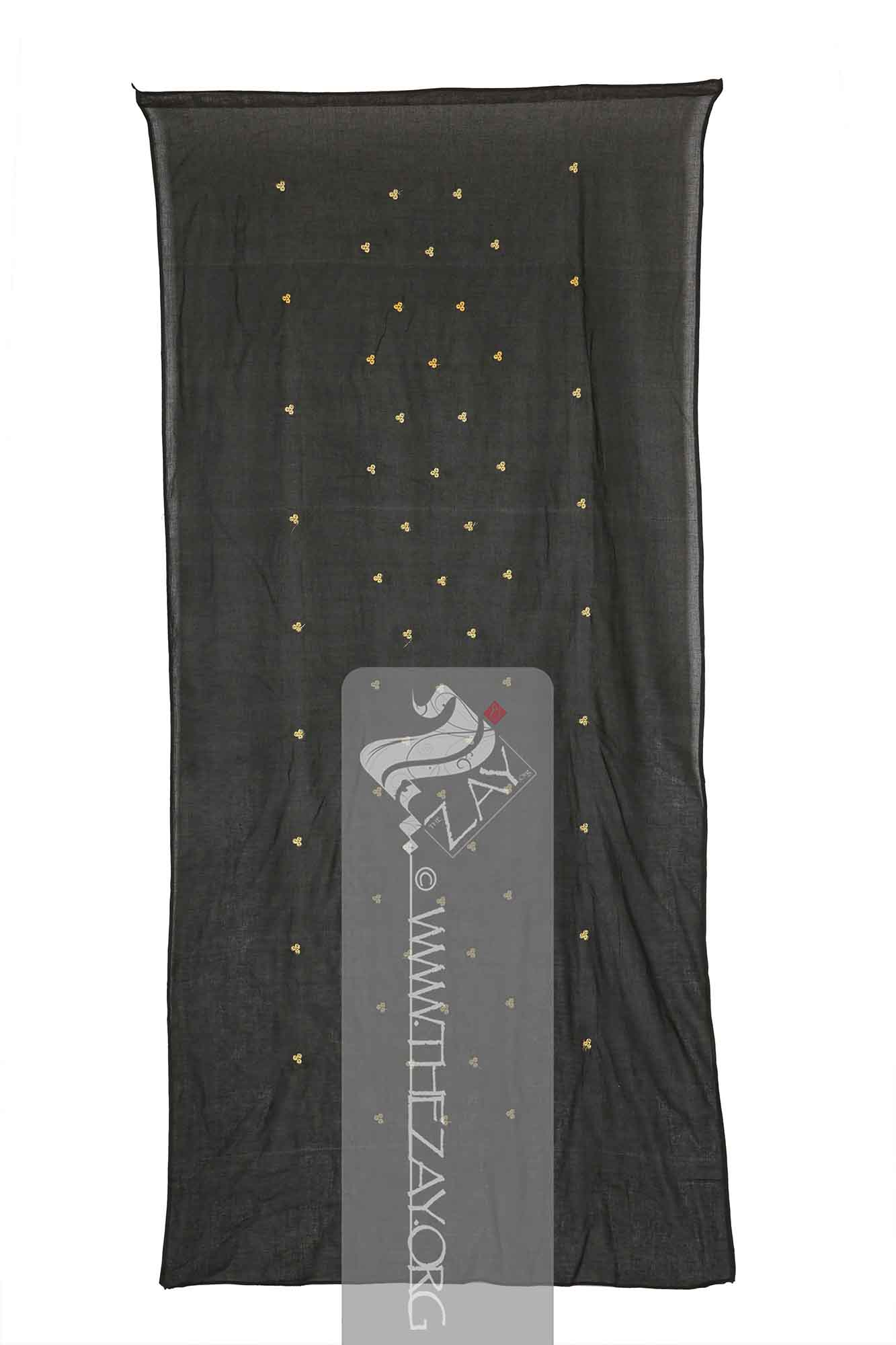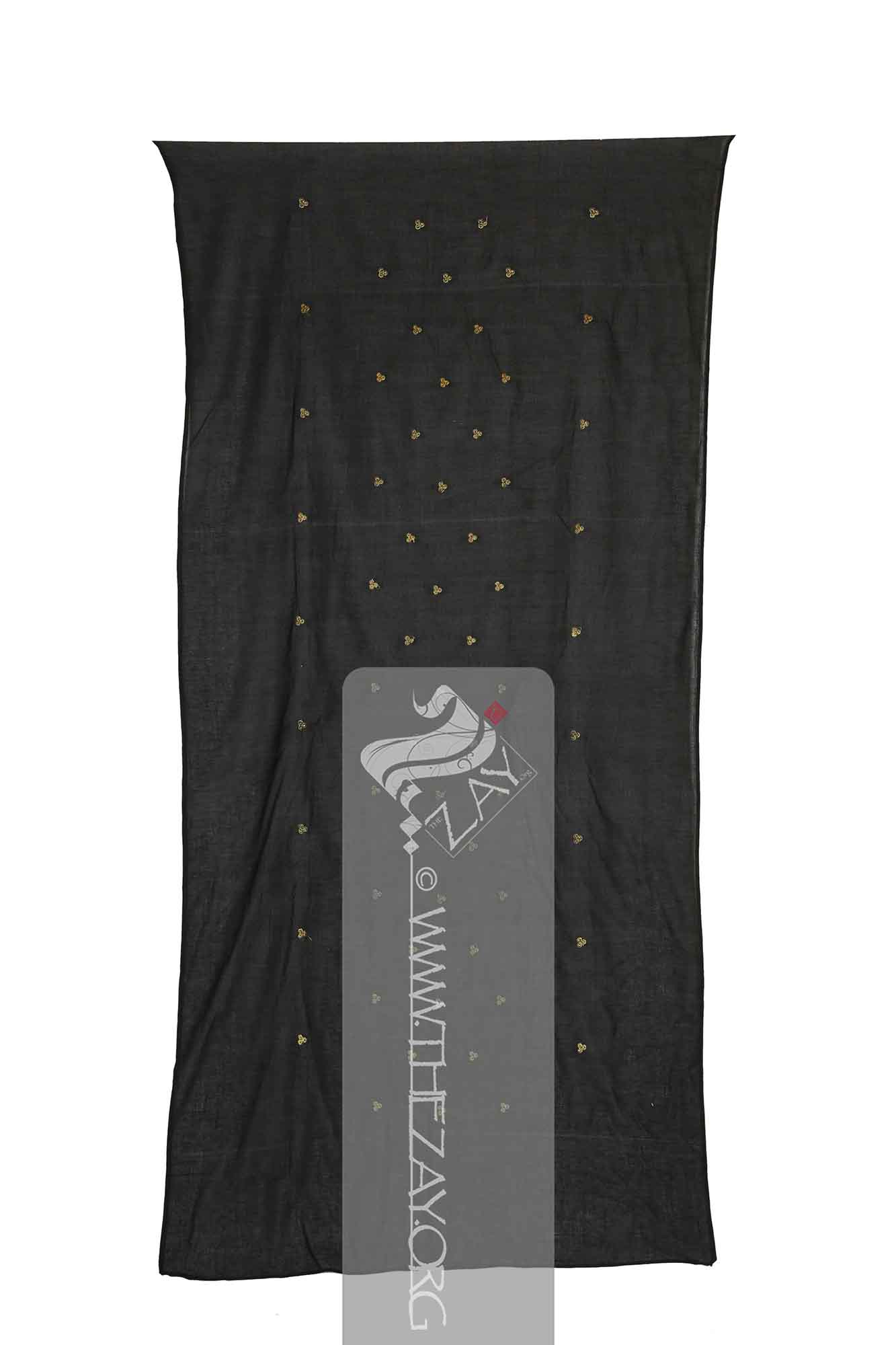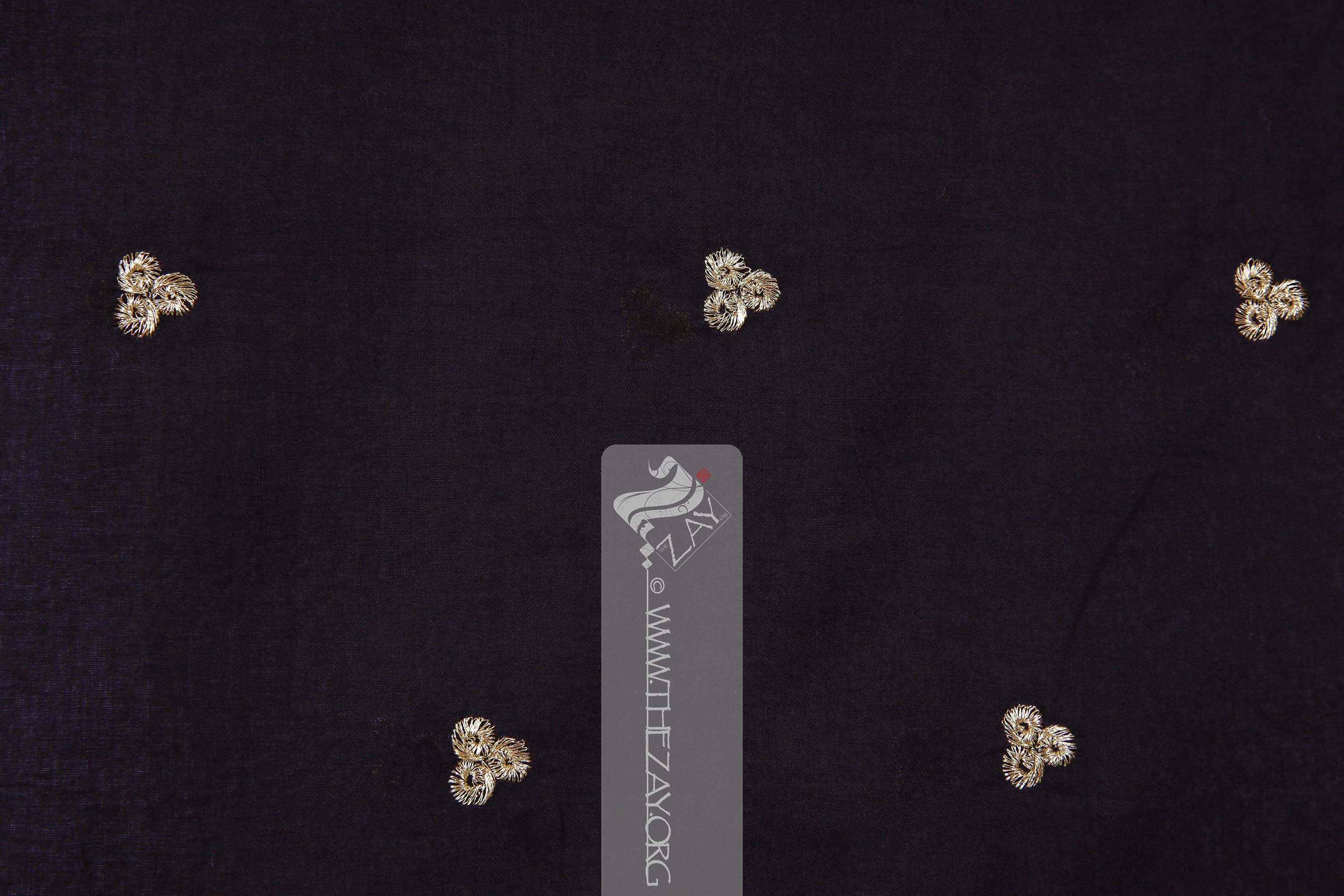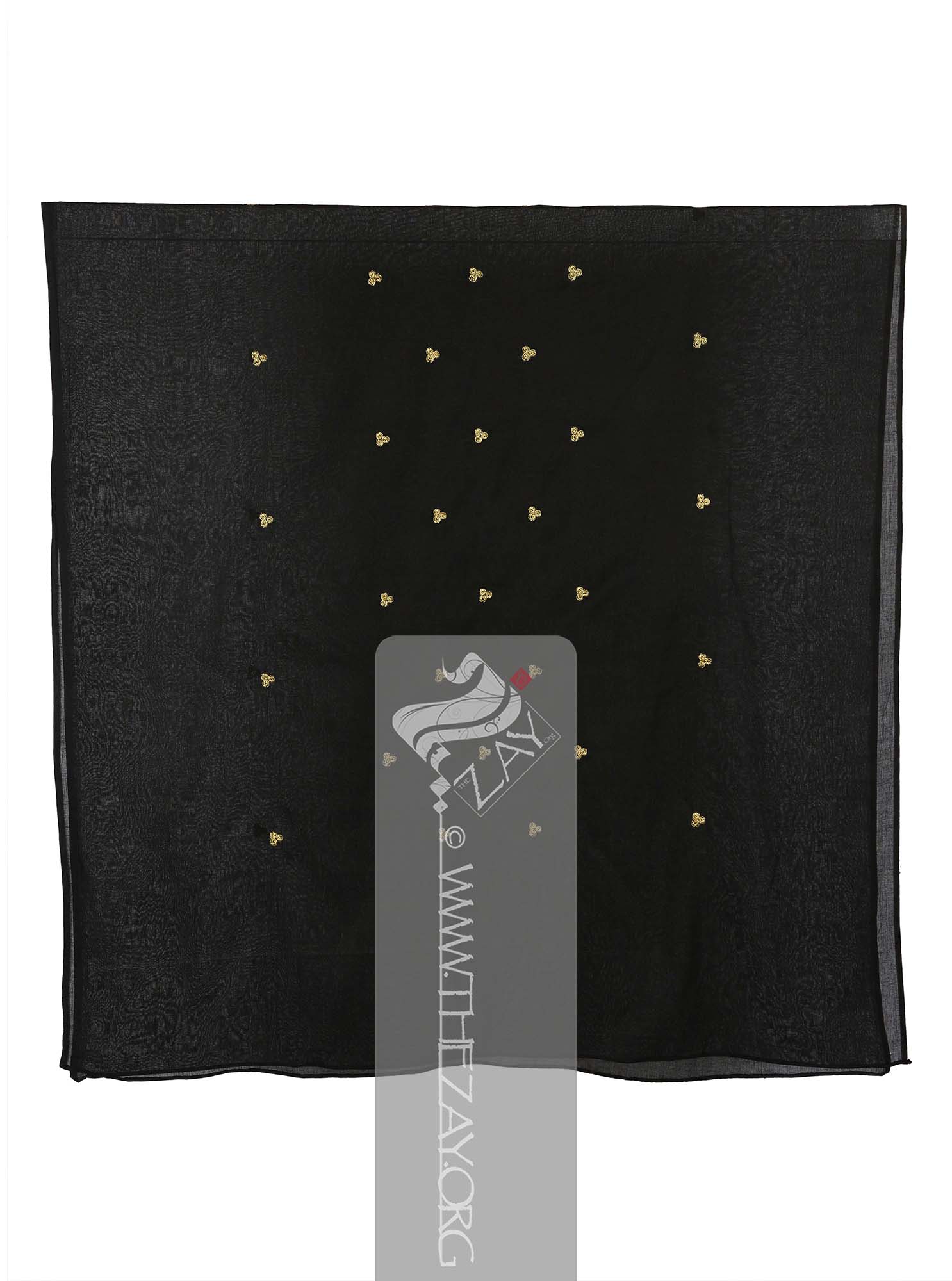Object History Purchased from Dubai old market by
Dr. Reem Tariq
Ṭariq: (Arabic; Synonym: tulle_bi_talli; talli; badla; khus_dozi ), series of small metal knots made on a woven net ground as embellishment. The term is commonly used in the Levant Arab region specifically in Lebanon.
el Mutwalli
Dr. Reem Tariq
Ṭariq: (Arabic; Synonym: tulle_bi_talli; talli; badla; khus_dozi ), series of small metal knots made on a woven net ground as embellishment. The term is commonly used in the Levant Arab region specifically in Lebanon.
el Mutwallī: Founder (CEO) of the Zay
Zay: (Arabic: costume, Pl. azyaā’), a set of clothes in a style typical of a particular country or historical period. Initiative, a public figure, speaker and author. An expert curator and consultant in Islamic art and architecture, interior design, historic costume, and UAE heritage. in 2005.
Object Features This light rectangular loose net weave cotton veil (
shaylah
Shaylah: (Colloquial Gulf Arabic), a length of fabric used as shawl
Shawl: (Persian: shāl from Hindi: duśālā – Shoulder Mantle), a shawl is a South Asian version of a scarf
Scarf: (English), usually a rectangular piece of cloth loosely worn over the shoulders, upper body and arms, and sometimes also over the head. worn or wrapped loosely over the shoulders and is usually made of wool. , head cover or veil. Also known as (wigāyah) or (milfa
Milfa’: (Arabic: to cover), shawl
Shawl: (Persian: shāl from Hindi: duśālā – Shoulder Mantle), a shawl is a South Asian version of a scarf
Scarf: (English), usually a rectangular piece of cloth loosely worn over the shoulders, upper body and arms, and sometimes also over the head. worn or wrapped loosely over the shoulders and is usually made of wool. or veil worn by women in the Arab Gulf regions and some areas of the Levant to cover the head.’), generally made from sheer fabrics such as tulle (tūr), cotton gauze (wasmah
Wasmah: (Arabic: woad), is derived from the woad herb (wasmah) used to dye the cotton gauze black. It is mainly used for headcovers or veils and overgarments in most of the Arab gulf region.) (nidwah) or (Nīl), or silk chiffon (sarī). nidwah
Nidwah: (Colloquial Gulf Arabic). Loose weave, black Indian cotton gauze
Gauze: (English), very fine wire mesh transparent fabric of silk, linen, or cotton. (shāsh) fabric. Generally used for shawl
Shawl: (Persian: shāl from Hindi: duśālā – Shoulder Mantle), a shawl is a South Asian version of a scarf
Scarf: (English), usually a rectangular piece of cloth loosely worn over the shoulders, upper body and arms, and sometimes also over the head. worn or wrapped loosely over the shoulders and is usually made of wool. , head scarf
Scarf: (English), usually a rectangular piece of cloth loosely worn over the shoulders, upper body and arms, and sometimes also over the head. or veil (shaylah
Shaylah: (Colloquial Gulf Arabic), a length of fabric used as shawl
Shawl: (Persian: shāl from Hindi: duśālā – Shoulder Mantle), a shawl is a South Asian version of a scarf
Scarf: (English), usually a rectangular piece of cloth loosely worn over the shoulders, upper body and arms, and sometimes also over the head. worn or wrapped loosely over the shoulders and is usually made of wool. , head cover or veil. Also known as (wigāyah) or (milfa
Milfa’: (Arabic: to cover), shawl
Shawl: (Persian: shāl from Hindi: duśālā – Shoulder Mantle), a shawl is a South Asian version of a scarf
Scarf: (English), usually a rectangular piece of cloth loosely worn over the shoulders, upper body and arms, and sometimes also over the head. worn or wrapped loosely over the shoulders and is usually made of wool. or veil worn by women in the Arab Gulf regions and some areas of the Levant to cover the head.’), generally made from sheer fabrics such as tulle (tūr), cotton gauze (wasmah
Wasmah: (Arabic: woad), is derived from the woad herb (wasmah) used to dye the cotton gauze black. It is mainly used for headcovers or veils and overgarments in most of the Arab gulf region.) (nidwah) or (Nīl), or silk chiffon (sarī).) and overgarments (athwāb). When dyed in woad it is called (wasmah
Wasmah: (Arabic: woad), is derived from the woad herb (wasmah) used to dye the cotton gauze black. It is mainly used for headcovers or veils and overgarments in most of the Arab gulf region.), when dyed in indigo
Indigo: (Latin: Indigo – India, synonym: nil
Nīl: (Latin: indigo), Arabised term for Indigo, a natural dye belonging to the ‘Indigofera Tinctoria’ species of plants that have been cultivated in East Asia, Egypt, India, and Peru since antiquity. According to Pliny the Elder, it was named after India as it was the source of the dye.), a natural dye belonging to the ‘Indigofera Tinctoria’ species of plants that has been cultivated in East Asia, Egypt, India, and Peru since antiquity. According to Pliny the Elder, it was named after India as it was the source of the dye. it is then called (nīl).) is simply a length of cut fabric adorned at regular intervals with machine embroidery (
khwar
Khwār: (colloquial, UAE) refers to machine embroidery in silk thread (brīsam), gold metallic coil (zarī), or pure silver coil (khwār_tūlah). It typically decorates the neckline opening (ḥalj) and sleeve cuffs of the tunic (kandūrah), the chest (bidḥah) on the overgarment (thawb) or ankle-cuffs of underpants (sarwāl). It is also known as (mkhawar
Mkhawar: (colloquial, UAE) refers to machine embroidery in silk thread (brīsam), gold metallic coil (zarī), or pure silver coil (khwār_tūlah). It typically decorates the neckline opening (ḥalj) and sleeve cuffs of the tunic (kandūrah), the chest (bidḥah) on the overgarment (thawb) or ankle-cuffs of underpants (sarwāl). It is also known as (khwār), (takhwīr), (dag), or (ḍarb).), (takhwīr), (dag), or (ḍarb).) in gold metallic thread (
zari
Zarī: (Persian two-syllables: zar: gold & dozi: embellishment), complex embroidery technique that uses metal alloy on silk, satin, or velvet, and may include pearls, beads, and precious stones. Colloquially in the Arab gulf region, the term (zarī) is loosely applied to any gilded thread, embellishment or gilded brocade fabric. Originated in ancient Persia it has been used extensively in Indian and Middle Eastern textiles for centuries. ), using small repetitive rings grouped in a triangular formation.
Though it is imported ready-made from India, it is of high-quality cotton and refined embroidery work, so to make it more commercially attractive the sellers tagged the term (landani) meaning of London quality to add further appeal.
This type of veil is reserved for special locations and social gatherings and it is worn together with a cloak (
abayah
‘Abāyah: (Arabic: cloak, Pl. ‘abāyāt, or ‘Ibī. In Classical Arabic: ‘abā’ah, pl: ‘abā’āt, synonyms: ‘Abā, ‘abāh, ‘abāt, dafah
Daffah : (Arabic: side, synonyms: ‘Abā, ‘abāyah, ‘abāh, ‘abāt, bisht or mishlaḥ), long, wide, and sleeveless outer cloak worn in public by both sexes. In time this article of dress evolved and changed in shape, style, and function., bisht, or mishlaḥ), long, wide, and sleeveless outer cloak worn in public by both sexes. In time this article of dress evolved and changed in shape, style, and function.) to cover just the head, shoulders, and upper portion of the body. It is generally draped off the head, gathered on each side, and tucked in place at the elbow junctures similar to draping a
shawl
Shawl: (Persian: shāl from Hindi: duśālā – Shoulder Mantle), a shawl is a South Asian version of a scarf
Scarf: (English), usually a rectangular piece of cloth loosely worn over the shoulders, upper body and arms, and sometimes also over the head. worn or wrapped loosely over the shoulders and is usually made of wool. .
A common public practice within the region is to pull down the top portion above the forehead concealing the whole face down to the chest line, or reversely hold one of the draped corners in both hands and flip it up to cover the crown concealing the entire face, neck, and chest areas. This then renders the article a (
ghishwah
Ghishwah: (Arabic: ghashā: to cover), the term is applied to any sheer fabric such as shawl
Shawl: (Persian: shāl from Hindi: duśālā – Shoulder Mantle), a shawl is a South Asian version of a scarf
Scarf: (English), usually a rectangular piece of cloth loosely worn over the shoulders, upper body and arms, and sometimes also over the head. worn or wrapped loosely over the shoulders and is usually made of wool. , head scarf
Scarf: (English), usually a rectangular piece of cloth loosely worn over the shoulders, upper body and arms, and sometimes also over the head. or veil (shaylah) if draped off the head to conceal the face, in Arab gulf dialect.) from the verb to conceal. Both actions are carried out by women very swiftly, elegantly, and somewhat sensuously when any non-relative male crosses their path unexpectedly.







